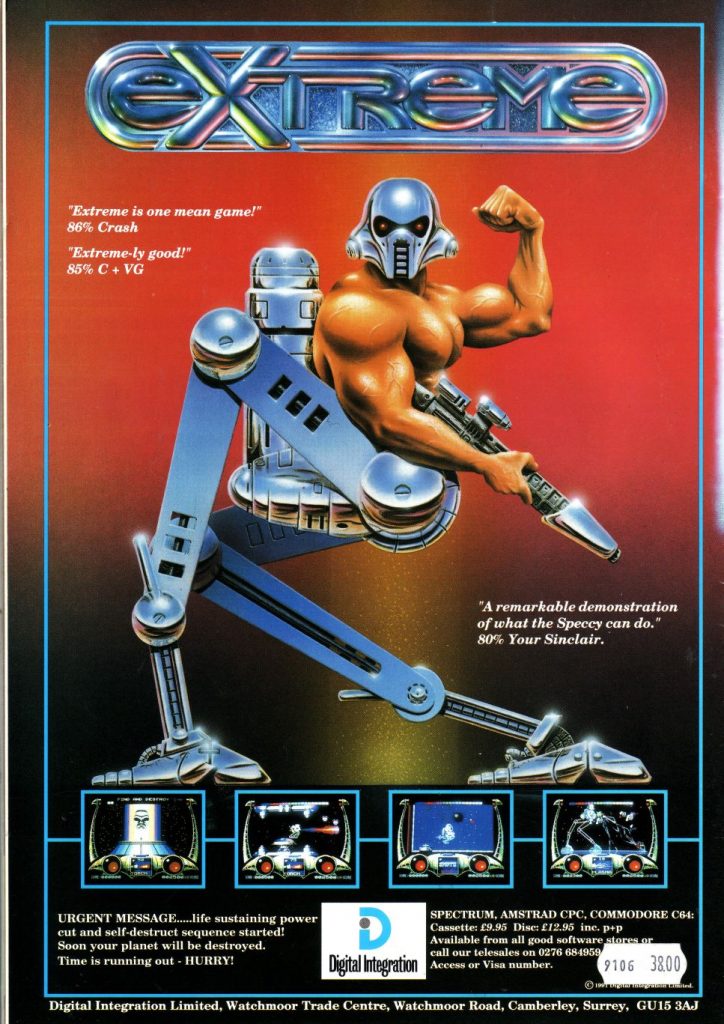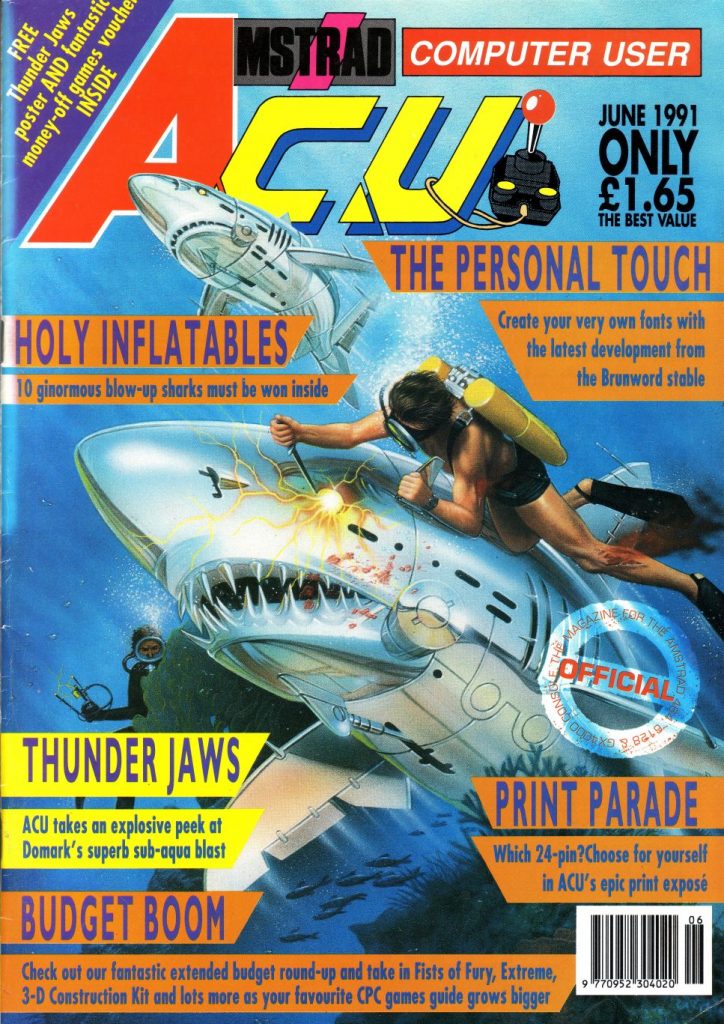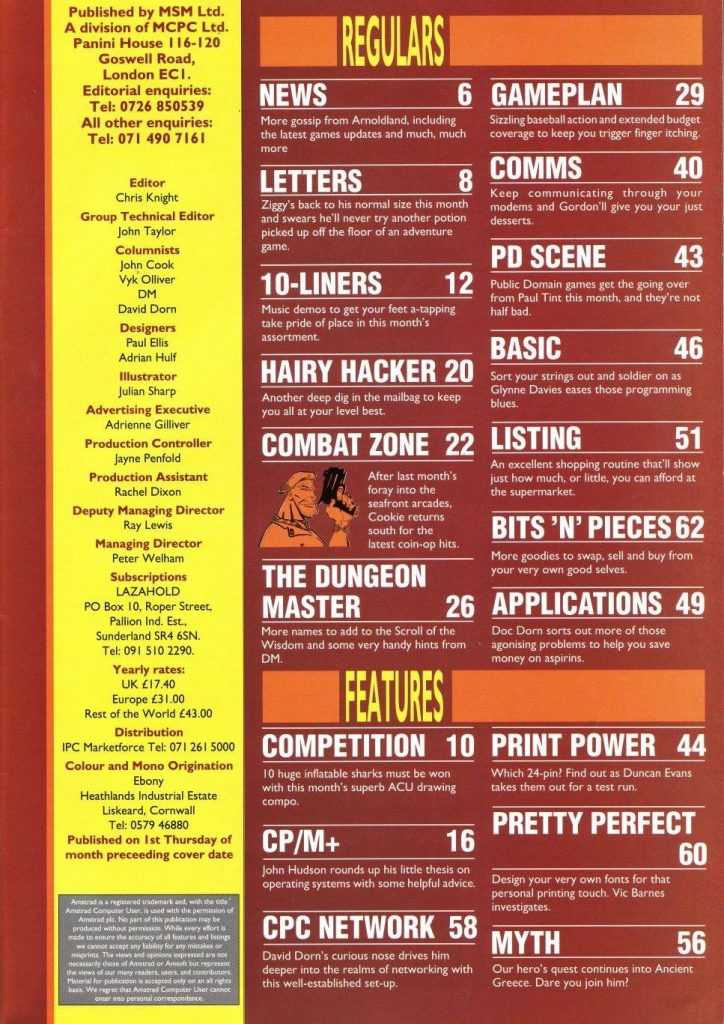Source: Amstrad Computer User – June 1991
Most in North America probably have never heard of the Amstrad CPC but it was quite a popular computer in Europe in the 1980s and early 1990s. While there were many upgraded variations over the years, the original CPC 464 was the most popular. It featured 64K of RAM and a Z80A processor running at 4 MHz. Amstrad Computer User was a magazine dedicated to these machines. The June 1991 issue includes:
Regulars
- News – A brief look at the Virtuality virtual reality system; Thunder Jaws released by Domark; new Seikosha LT20 dot matrix printer designed for laptops; and more.
- Letters – Readers write in about the Star LC200 color printer, CPC 464+ connection differences, finding Amstrad games, Maxwell House BBS, MaxiDOS, and more.
- 10-Liners – Short type in programs including the Hawaii Five-O theme, scrolling text demo, a graphics demo that splits the screen into nine parts, and a word search.
- Hairy Hacker – Hacks for Robin Hood, Ranarama, Harrier Attack, Cybernoid II, Nebulus, and more.
- Combat Zone – A look at some of the latest arcade games including the new Virtuality system, Ramparts, GP Rider, and Borench.
- The Dungeon Master – A column on adventure/RPG games. This month: ways to obtain older adventure games; the demise of The Interceptor Group; some new games including Yarkon Blues, orb Quest, The Case of the Mixed-Up Shymer, Talisman, and more; plus hints for several games and more.
- Gameplan – Game reviews for Fists of Fury (Virgin Games), Emlyn Hughes Arcade Quiz (Audiogenic), Extreme (Digital Integration), Grand Prix (D&H Games), Thunder Jaws (Domark), Helter Skelter (Audiogenic), and 3-D Construction Kit (Domark). Plus a look at various budget games including Gemini Wing, The Real Ghostbusters, Driller, Passing Shot, European Soccer, Rambo III, and more.
- Comms – Updates to the Maxwell House BBS system and a look at three new modems, including the Mercury V.32 Modem (9600bps), a new V.32 modem from Andest (9600bps), and the Datatrek 624E modem (V22bis, 2400bps).
- PD Scene – A look at some recent public domain software, including Wipeout (a Breakout clone), Blockup (like Tetris), and more.
- Basic – Using arrays in BASIC.
- Listing – A type-in program called “Shopping Master” that helps you to budget your grocery shopping and create shopping lists.
- Applications – A guide to getting your CPC online.
Features
- Competition – A competition in which you can win a large inflatable shark, sponsored by Domark and a promotion for Thunder Jaws.
- CP/M+ – Most Z80 based computers had a version of CP/M for them and the Amstrad was no exception. This is the last part in a series looking into CP/M+.
- CPC Network – Setting up a network of CPC computers running CP/M using Simplenet.
- Print Power – A look at a few “low cost” 24-bin dot matrix printers, including the Citizen 124D, Star LC24-10, Panasonic KX-P1123, and Seikosha SL-92. Low cost in this context meant about $300.
- Pretty Pefect – Creating custom fonts on the Amstrad CPC.
- Myth – An ongoing comic series featuring the beheading of Medusa in this installment.

…and more!







